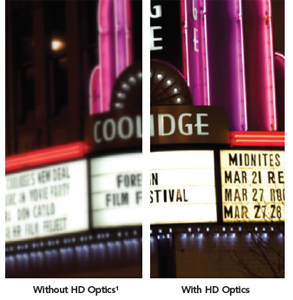Provided below are references for published research articles on the topic of vision therapy and its effectiveness for the treatment of many vision conditions.
Please note: Some of the references are available as links to original published research or complete articles in PDF format. The articles can also be located on-line at Pubmed.org. and photocopies of the remaining publications can be requested from the International Library, Archives and Museum of Optometry (ILAMO), St. Louis, Missouri. Phone 800-365-2219.
1. Randomized Clinical Trial of Treatments for Convergence Insufficiency in Children
Finding: Office-based vision therapy is an effective treatment for children with Convergence Insufficiency.
Published by: Mitchell Scheiman, OD; Susan Cotter, OD, MS; G. Lynn Mitchell, MAS; Marjean Kulp, OD, MS; Michael Rouse, OD, MEd; Richard Hertle, MD; and Maryann Redford, DDS, MPH. ‘Convergence Insufficiency Treatment Trial (CITT) Study Group. A randomized clinical trial of treatments for convergence insufficiency in children. Archives of Ophthalmology 2005’; 123:14-24.
For the PDF version of this article: Randomized Clinical Trial of Treatments for Symptomatic Convergence Insufficiency in Children. Archives of Ophthalmology, Vol. 126 No. 10, October 2008
2. Best Treatment Determined for Childhood Eye Problem
Finding: 75 percent of the children who had weekly office-based vision therapy, coupled with 15 minutes of at-home exercise five days a week, experienced significant improvement in their convergence in 12 weeks.
Published by: Mayo Clinic: ‘Best Treatment Determined for Childhood Eye Problem’ : Treatment of Convergence Insufficiency with Vision Therapy.
3. Effective Treatment Identified for Common Childhood Vision Disorder
Finding: Scientists find a more effective treatment for a common childhood eye coordination problem called convergence insufficiency (CI).
Published by: National Eye Institute, ‘More Effective Treatment Identified for Common Childhood Vision Disorder’: Evidence-Based Treatment for Convergence Insufficiency
4. Study Reveals Developmental Mechanisms of Eye Movement
Finding: Genes linked to Autism Spectrum Disorder (ASD), and other developmental brain abnormalities, may be playing a role in people who cannot control their eye movements.
Published by: National Eye Institute: Autism and Eye Movements, 2019: Autism linked to Eye Movement Control
SEE RELATED: 2021 Update: Vision Therapy Research
5. The Amblyopia Treatment Studies: Implications for Clinical Practice
Finding: Patching times can be reduced and still achieve a similar visual improvement.
Published by: Angela M. Chen, Susan A. Cotter: Adv Ophthalmol Optom. 2016 Aug’ The Amblyopia Treatment Studies: Implications for Clinical Practice’; Amblyopia Treatment Studies:
6. Vision, ADHD, and Learning
Summary: Selected essential resources and links for teachers and other professions.
Vision, ADHD and Learning: Click here for link to articles:
7. Vision, Learning, and Dyslexia
Summary: A policy statement that addresses important issues regarding the identification and treatment process for individuals with learning-related vision problems and dyslexia.
Official Statement, approved by the American Academy of Optometry (AAO), American Optometry Association (AOA), American Foundation for Vision Awareness (AFVA), College of Optometrists in Vision Development (COVD), Optometric Extension Program Foundation (OEPF).
A Joint Organizational Policy Statement of the American Academy of Optometry and the American Optometric Association. ‘Vision, Learning, and Dyslexia’. 1997. Complete article – PDF version
8. Research on the Efficacy of Vision Therapy for Specific Visual Dysfunctions
Finding: Optometric and ophthalmological research supports the efficacy of vision therapy for treatment of the visual dysfunctions discussed in this article.
Published by: Cooper, Jeffrey. Summary of Research on the Efficacy of Vision Therapy for Specific Visual Dysfunctions. Adapted from The Journal of Behavioral Optometry 1998; 9(5):115-119. Complete article – PDF version
9. A Joint Organizational Policy Statement of the American Academy of Optometry and the American Optometric Association
Summary: A policy statement describing the goals of a vision therapy program, and its effectiveness for treatment of a wide variety of vision conditions.
A Joint Organizational Policy Statement of The American Academy of Optometry and the American Optometric Association. ‘Vision Therapy: Information for Health Care and Other Allied Professionals’. 1999. Complete article – PDF version
10. Effective Treatment of Convergence Insufficiency
Summary: Although CI is quite common, with reported rates of prevalence ranging up to 13%, this pilot study by Scheiman and colleagues does move forward our understanding of the treatment of this disorder.
Published by: Kushner Burton J. ‘The Treatment of Convergence Insufficiency. Archives of Ophthalmology 2005’, 123:100-101. Complete article – PDF version
LEARN MORE: Vision Therapy for Children
Additional references and scientific studies:
- Maples WC. ‘Visual factors that significantly impact academic performance’. Optometry 2003; 4:35-49.
- Bowan MD. Learning disabilities, dyslexia, and vision: a subject review. Optometry 2002; 73:553-75.
- Ciuffreda, Kenneth J. The Scientific Basis for and Efficacy of Optometric Vision Therapy in Nonstrabismic Accommodative and Vergence Disorders. Optometry 2002; 73:735-62.
- Cooper J, Burns C, Cotter S, et. al. Optometric Clinical Guideline: Care of the Patient With Accommodative or Vergence Dysfunction. American Optometry Association 1998.
- Zaba JN, Johnson RA, and Reynolds WT. Vision examinations for all children entering public school – the new Kentucky law. Optometry 2003; 74:149-58
- American Optometric Association. Definition of optometric vision therapy, St. Louis, MO, June 1991.
- American Optometric Association. Fact sheets on optometric vision therapy, St. Louis, MO, June 1992.
- Atzmon, D., Nemet, P., Ishay, A., Karni, E.: A Randomized Prospective Masked and Matched Comparative Study of Orthoptic Treatment Versus Conventional Reading Tutoring Treatment for Reading Disabilities in 62 Children. Binocular Vision and Eye Muscle Surgery Quarterly, 1993, pages 91-106.
- Bass S.J., Cooper J., Feldman, Horn D. Comparision of an Automated Confrontation Testing Devise vs Finger Counting in the Detection of Visual Field Loss (in preparation)
- Birnbaum, M.H., Koslowe, K., Sanet, R.: Success in amblyopia therapy as a function of age. A literature review. American Journal of Optometry and Physiological Optics, 1977, pages 269-75.
- Birnbaum, M.H., Soden, R., Cohen, A.H.: Efficacy of vision therapy for convergence insufficiency in an adult male population. Journal of the American Optometric Association, 1999, pages 225-232.
- Borsting E., Rouse M.W., et al. Association of Symptoms and Convergence and Accommodative Insufficiency in School-Age Children. Optometry 2003 Jan;74(1):25-34.
- Borsting E., Rouse M.W., Mitchell G.L., Scheiman M., Cotter S.A., Cooper J., Kulp M.T., London R., and The Convergence Insufficiency Treatment Trial Group. Validity and Reliability of the Revised Convergence Insufficiency Symptom Survey in Children Aged 9 to 18 Years. Optom Vis Sci; 80(12):832-838, 2003.
- Borsting E, Rouse M, Chu R. Measuring ADHD behaviors in children with symptomatic accommodative dysfunction or convergence insufficiency: a preliminary study. Optometry. 2005 Oct;76(10):588-92.
- Brodney A.C., Pozil R., Mallinson K., Kehoe P. Vision Therapy in a School Setting. Journal of Behavioral Optometry,12(4):99-103, 2001.
- Buzzelli, A.R.: Stereopsis, accommodative and vergence facility: do they relate to dyslexia? Optometry and Visual Science, 1991, pages 842-846.
- Canellos H.M., Cooper J., Paek A., Chien J. Multiple Calcified Deposits Along Eyelids Secondary to Chronic Renal Failure and Hyperparathyroidism (accepted JAOA)
- Carniglia P., Cooper J. Vergence Adaptation in Esotropia. Opt Vis Sci, 69 (4): 308-313, 1992.
- Ciufredda, K.J.: Goldrich S.G., Neary, C.: Use of eye movement auditory feedback in the control of nystagmus. American Journal of Optometry and Physiological Optics, 1982, pages 396-409.
- Clinical Pediatric Optometry (LJ Press, B Moore, published by Butterworth-Heinemann, 1993).
- Cohen A., Lieberman S., Stolzberg M., Ritty J. The NYSOA vision screening battery — a total approach. Journal of the American Optometric Association, 1983; 54: 979-84.
- Cohen, A.H., Soden, R.: Effectiveness of visual therapy for convergence insufficiencies for an adult population. Journal of the American Optometric Association, 1984, pages 491-494.
- Colavito J., Cooper J., Ciuffreda K. Non-Ptotic Ocular Myasthenia Gravis: A Common Presentation of an Uncommon Disease (in preparation)
- Cooper J., Burns C., Cotter S., Daum K.M., Griffin JR, Scheiman M. Optometric Clinical Guideline: Care of the Patient With Accommodative or Vergence Dysfunction. Am. Optom. Ass. 1998.
- Cooper J., Ciuffreda K.J., Carniglia P.E., Zinn K.M., Tannen B. Orthoptic Treatment and Eye Movement Recordings in Guillain-Barreí Syndrome. A case report. Neuro-ophthalmology 15(5):249-256, 1995.
- Cooper J., Feldman J., Eichler R. Relative Strength of Central and Peripheral Fusion as a Function of Stimulus Parameters. Opt. Vis Sci, 69: 1992.
- Cooper J., Feldman J., Pasner K. Intermittent Exotropia: Stimulus Characteristics Affect Tests for Retinal Correspondence and Suppression. Bin Vis & Eye Mus Qtly. 15(2):131-140, 2000
- Cooper J., Medow N. Correspondence: Sensory Status in Intermittent Exotropia. Bin Vis Eye Mus Surg Qtly. 9:11-12, 1994.
- Cooper J., Medow N. Intermittent Exotropia of the Divergence Excess Type: Basic and Divergence Excess Type (Major Review). Bin Vis Eye Mus Surg Qtly 8:187-222, 1993.
- Cooper J., Pollack G., Ciuffreda K., Kruger, Feldman J. Accommodative and Vergence Findings in Myasthenia Gravis: A Case Report. Journal Neuro-Ophthalmology. 20(1): 5-11, 2000.
- Cooper J., Selenow A., Ciuffreda K.J.., Feldman J., Faverty J., Hokoda S., Silver J. Reduction of aesthenopia in patients with convergence insufficiency after-fusional vergence training. Am J Optom & Physiol Opt 60(12):982-989, 1983.
- Cooper J. Diagnosis and Treatment of Accommodative and Vergence Anomalies Using Computerized Vision Therapy. Practical Optometry. 9:6-10, 1998.
- Cooper J. Intermittent Exotropia of the Divergence Excess Type – A View Point Journal of Behavioral Optometry, 1997.
- Cooper J. Orthoptic treatment of vertical deviations. J Am Optom Assoc 59(6):463-468, 1988.
- Cooper, J. Ch. 14: Stereopsis. In Procedures in Optometry. Eds. Amos J., Eskridge B. Bartlett Lippencott, 1991.
- Cooper, J. Clinical Implications of Vergence Adaptation. Opt Vis Sci, 69 (4): 300-307, 1992.
- Cooper, J., Duckman, R.: Convergence insufficiency: Incidence, diagnosis and treatment. Journal of the American Optometric Association, 1978, pages 673-680.
- Cooper, J., Feldman, J.: Operant Conditioning of fusional convergence ranges using random dot stereograms. American Journal of Optometry and Physiological Optics, 1980, pages 205-213.
- Cooper, J., Medow, N.: Intermittent exotropia basic and divergence excess type. Binocular Vision & Eye Muscle Surgery Quarterly, 1993, pages 185-216.
- Cooper, J., Selenow, A., Ciuffreda, K.J., et al.: Reduction of asthenopia in patients with convergence insufficiency after fusional vergence training. American Journal of Optometry and Physiological Optics, 1983, pages 982-989.
- Cornsweet, T.N.: Training the visual accommodative system. Vision Research, 1973, page 713-715.
- Cotter S.A. Conventional therapy for amblyopia. In: Problems in Optometry, RP Rutstein (ed), 3(2): 312, 1991.
- Daum K. Accommodative insufficiency. Am J Optom & Physiol Opt 60(5):352-359, 1983.
- Daum K. The course and effect of visual training on the vergence system. Am J Optom & Physiol Opt 59(3):223-227, 1982.
- Daum, K.: Predicting results in the orthoptic treatment of accommodative dysfunction. American Journal of Optometry and Physiological Optics, 1984, pages 184-189.
- Daum, K.: The course and effect of visual training on the vergence system. American Journal of Optometry and Physiological Optics, 1982, pages 223-227.
- Daum, K.M.: A comparison of the results of tonic and phasic training on the vergence system. American Journal of Optometry and Physiological Optics, 1983, pages 769-775.
- Developmental & Perceptual Assessment of Learning-Disabled ChildrenÜ(S Groffman and HA Solan, published by Optometric Extension Program, 1994).
- Donmoyer R. Kos. At-risk students: portraits, policies, programs, and practices. Albany, NY: State University of New York Press, 1993.
- Duckman, R.H.: Effectiveness of visual training on a population of cerbral palsied children. Journal of the American Optometric Association, 1980, pages 1013-1016.
- Education Commission of the States. Securing our future: the report of the national forum for youth at-risk. Denver, CO, 1988.
- Etting, G.: Strabismus therapy in private practice: cure rates after three months of therapy. Journal of the American Optometric Association, 1978, pages 1367-73.
- Farrar, R., Call, M., Maples, W.C., A comparison of the visual symptoms between ADD/ADHD and normal children. Optometry, 2001, pages 441-451.
- Ficarra A.P., Berman J., et al. Vision training: predictive factors for success in visual therapy for patients with convergence excess. J Optom Vision Dev, 27:213-9, 1996.
- Feldman J., Cooper J., Reinstein F., Swiatoca J. Asthenopia Induced by Computer-Generated Fusional Vergence Targets. Opt Vis Sci, 69: 710-716, 1992.
- Feldman J.M., Cooper J., Eichler R. Effect of Various Stimulus Parameters on Fusional Horizontal Amplitudes in Normal Humans. Bin Vis Eye Mus Surg Qtly 1993, 8:23-32.
- Ficarra A.P., Berman J.B., Rosenfield M., Portello J.K. Vision training: predictive factors for success in visual therapy for patients with convergence excess. J Optom Vision Dev 27, 1996, (4): 213-219.
- Fischer B., Hartnegg K., “Effect of Visual Training on Saccade Control in Dyslexia.” Perception, 2000, 29(5):531-542.
- Flax N., Duckman R. Orthoptic treatment of strabismus. J Am Optom Assoc 49(12):1353-1360, 1978.
- Flax, N., Duckman, R.H.: Orthoptic treatment of strabismus. Journal of the American Optometric Association, 1978, pages 1353-61.
- Future of Visual Development/Performance Task Force. Report on the efficacy of optometric vision therapy. J Am Optom Assoc 59(2):95-105, 1988.
- Gallaway, M., Scheiman, M.: The efficacy of vision therapy for convergence excess. Journal of the American Optometric Association, 1997, pages 81-85.
- Garzia, R., Richman, J.: Accommodative facility: a study of young adults. Journal of the American Optometric Association, 1982, pages 821-824.
- Garzia, R.P.: The efficacy of visual training in amblyopia: A literature review. American Journal of Optometry and Physiological Optics, 1987, pages 393-404.
- Goldrich, S.G.: Oculomotor biofeedback and intermittent exotropia. American Journal of Optometry and Physiological Optics, 1982, pages 306-317.
- Goldrich, S.G.: Optometric therapy of divergence excess strabismus. American Journal of Optometry and Physiological Optics, 1980, pages 7-14.
- Granet D.B., Gomi C.F., Ventura R., Miller-Scholte A. The Relationship between Convergence Insufficiency and ADHD. Strabismus 2005 Dec;13(4):163-8.
- Greenstein T. Identification of children with vision problems that interfere with learning. In T. Greenstein, Vision and learning disability. American Optometric Association, St. Louis, 1976, p. 95-114.
- Grisham, J.D., Bowman, M.C., Owyang, A., Chan, C.L.: Vergence orthoptics: validity and persistence of the training effect. Optometry and Vision Science, 1991, pages 441-451.
- Grisham, JD, Powers, MK, Riles, P. Visual Skills Training Improves Reading Performance, Gemstone Foundation, 400 Capitol Mall, Suite 1540, Sacramento, California 95814-4408
- Gruning C.F. Clinical management of nearpoint stress-induced vision problems. American Journal of Optometry & Physiological Optics, 1985, Jun;62(6):386-391.
- Halliwell, J.W., Solan, H.A.: The effects of a supplemental perceptual training program on reading achievement. Exceptional Children, 1972, pages 613-621.
- Hayes G.J., Cohen B.E., Rouse M.W., De Land P.N. Normative values for the nearpoint of convergence of elementary schoolchildren. Optom Vis Sci, 1998, Jul;75(7):506-12.
- Haynes, H.M., McWilliams, L.G.: Effects of training on near-far response time as measured by the distance rock test. Journal of the American Optometric Association, 1979, pages 715-718.
- Hennessey D., Iosue, R.: Relation of symptoms to accommodative infacility of school-aged children. American Journal of Optometry and Physiological Optics, 1984, page 177.
- Hoffman L.H.: Incidence of vision difficulties in children with learning disabilities. Journal of the American Optometric Association, 1980, pages 447-451.
- Hoffman, L., Cohen, A.H.: Effectiveness of non strabismic optometric vision training in a private practice. American Journal of Optometry and Archives of the American Academy of Optometry, 1973, pages 813-816.
- Hoffman, L.: The effect of accommodative deficiencies on the development level of perceptual skills. American Journal of Optometry and Physiological Optics, 1982, pages 254-262.
- Hokoda SC, Ciuffreda KJ. Different rates and amounts of vision function recovery during orthoptic therapy in an older strabismic amblyope. Ophthal Physiol Opt, 6:213-20, 1986.
- Hung, G.K., Ciuffreda, K.J., Semmlow, J.L.: Static vergence and accommodation: norms and orthoptic effects. Documents of Ophthalmology, 1986, pages 165-179.
- Jenkins R.H. Characteristics and Diagnosis of Convergence Insufficiency. American Orthoptic Journal, 1999, 49:7-11.
- Johnson R., Zaba J. Examining the link between vision and literacy. Journal of Behavioral Optometry, 1994; 5(2): 41-43.
- Johnson R., Zaba J. Vision screening of at-risk college students. Journal of Behavioral Optometry, 1995; 6(3): 62-65.
- Keech, R.V. Symposium: Near Vision and Reading Disorders. American Orthoptic Journal, 1999, 49:1-47.
- Kran B., Duckman R. Divergence excess exotropia. J Am Optom Assoc, 1987, 58(11):921-930.
- Krumholtz I., FitzGerald D. Efficacy of treatment modalities in refractive amblyopia. Journal of the American Optometric Association, 1999, June; 70(6): 399-404.
- Learning about Learning Disabilities, 2nd ed.(edited by B Wong, published by Academic Press in 1998).
- Lazarus SM, The Use of Yoked Base-Up and Base-In Prism for Reducing Eye Strain At the Computer. J Am Optom Assoc, 1996(67) 204-208.
- Lee, R. Active Vision Therapy on an Adult Strabismic Amblyope. Journal of Behavioral Optometry, 1999, 10(5).
- Leslie S., Optometric Management of Persistent Streff Syndrome with Vertical Yoked Prisms. Behav Aspects Vision Care, 2001 (42) #1 33-42.
- Levine, S., Ciuffreda K.J., Selenow, A., et al.: Clinical assessment of accommodative facility in symptomatic and asymptomatic individuals. Journal of the American Optometric Association, 1985, pages 286-290.
- Lieberman S.: The prevalence of visual disorders in a school for emotionally disturbed children. Journal of the American Optometric Association, 1985, pages 800-805.
- Liu J.S., Lee M., Jang J., Ciuffreda K.J., Wong J.H., Grisham D., Stark L. Objective assessment of accommodation orthoptics: 1. Dynamic, insufficiency. Am J Optom & Physiol Opt 56(5): 285-291, 1979.
- Ludlam, W.M., Kleinman, B.I.: The long range results of orthoptic treatment of strabismus. American Journal of Optometry and Archives of the American Academy of Optometry, 1965, pages 647-684.
- Ludlam, W.M.: Orthoptic treatment of strabismus. American Journal of Optometry and Archives of the American Academy of Optometry, 1961, pages 369-388.
- Ludlam, W.M.: Visual training, the alpha activation cycle and reading. Journal of the American Optometric Association. 1979, pages 111-115.
- Luu CD, Green JF, Abel L. Vertical fixation disparity curve and the effects of vergence training in a normal young adult population. Optom Vis Sci, 2000, 77: 663-69.
- Mazow ML, France TD, et al. Acute accommodative and convergence insufficiency. Trans American Ophthalmology Society, 1989, 87: 158-168.
- Munoz DP, Armstrong IT, Hampton KA and Moore KD, “Altered Control of Visual Fixation and Saccadic Eye Movements in Attention-Deficit Hyperactivity Disorder.” J Neurophysiol, 2003 (90): 503-514.
- North RV, Henson DB. The effect of orthoptic treatment upon the vergence adaptation mechanism. Optom Vis Sci, 1992, 69:294-9.
- Optometric Management of Learning-Related Vision Problems (Scheiman and Rouse, published by Mosby in 1994).
- Optometric Management of Reading DysfunctionÜ(JR Griffin, GN Christenson, MD Wesson, GB Erickson, published by Butterworth-Heinemann in 1997).
- Pantano R. Orthoptic treatment of convergence insufficiency: A two year follow-up report. American Orthoptic Journal, 57: 73-80, 1982.
- Passmore JW, Maclean F. Convergence insufficiency and its management. Am J Ophthal, 1957, 43: 448-56.
- Pavlidis, G.T.: Eye movements in dyslexia: Their diagnostic significance. Journal of Learning Disabilities, 1985, pages 42-50.
- Petrunak JL. “The treatment of convergence insufficiency.” American Orthoptic Journal, 1999, 49:12-16.
- Poynter, H.L., Schor C., Haynes, H.M., et al: Oculomotor functions in reading disability. American Journal of Optometry and Physiological Optics, 1982, pages
- Press, L.J.: The interface between ophthalmology and optometric vision therapy. Binocular Vision and Strabismus Quarterly, 2002, pages 6-11.
- Pritchard C, Ellis GS. “Management of intermittent exotropia: For non-surgical therapy.” Am Orthoptic J, 48: 21-24, 1998.
- Richman, J.E.: Use of a sustained visual attention task to determine children at risk for learning problems. Journal of the American Optometric Association, 1986, pages 20-26.
- Rustein R.P. Alternative treatment for amblyopia. In: Problems in Optometry, RP Rustein (ed), 3(2): 331, 1991.
- Rustein R.P., Fuhr PS. Efficacy and stability of amblyopia therapy. Optom Vis Sci, 69:747-54, 1992.
- Rounds B.B., Manley CW, Norris RH “The effect of oculomotor training on reading efficiency.” J Amer Optom Assoc, 1991 (62): 92-97
- Rouse M. Management of binocular anomalies: efficacy of vision therapy in the treatment of accommodative deficiencies. Am J Optom & Physiol Opt, 1987, 64(6):415-420.
- Rouse M.W., Borsting E, Hyman L, Hussein M, Cotter SA, Flynn M, Scheiman M, Gallaway M, De Land PN, Frequency of Convergence Insufficiency Among Fifth and Sixth Graders. The Convergence Insufficiency and Reading Study (CIRS) group. Optom Vis Sci, 1999 Sep;76(9):643-9.
- Rouse M.W., Hyman L, Hussein M, Solan H. “Frequency of convergence insufficiency in optometry clinic settings. Convergence Insufficiency and Reading Study (CIRS) Group.” Optom Vis Sci, 1998 Feb;75(2):88-96.
- Saladin, J.J., Rick, J.O.: Effect of orthoptic procedures on stereoscopic acuities. American Journal of Optometry and Physiological Optics, 1982, pages 718-725.
- Saulles H. Treatment of refractive amblyopia in adults. J Amer Optom Assoc, 58:959-60, 1987.
- Scheiman M, Cooper J, Mitchell L, DeLand P, Cotter S, Borsting E, London R, Rouse M. A Survey of Treatment Modalities for Convergence Insufficiency. Optom. Vis. Sci. 79(3):151-157, 2002.
- Scheiman M, Mitchell L, Cotter S, Cooper J, Kulp M, Rouse M, Borsting E, London R, Wensveen J, Convergence Insufficiency Treatment Trial (CITT) Study Group. A Randomized Clinical Trial of Treatments for Convergence Insufficiency in Children (Archives of Ophthalmology – Jan 2005)
- Scheiman, M. and others. Vision characteristics of individuals identified as Irlen Filter candidates. Journal of the American Optometric Association, 1990, 61:600-605.
- Seiderman, A.S.: Optometric vision therapyóresults of a demonstration project with a learning disabled population. Journal of the American Optometric Association, 1980, pages 489-493.
- Selenow A, Ciuffreda KJ. Vision function recovery during orthoptic therapy in an adult exotropic amblyope. J Amer Optom Assoc, 57:132-40, 1986.
- Selenow A, Ciuffreda KJ. Vision function recovery during orthoptic therapy in an exotropic amblyope with high unilateral myopia. Am J Optom Physiol Opt, 1983, 60:659-66.
- Sheedy, J.E., Saladin J.J.: Association of symptoms with measures of oculomotor deficiencies. American Journal of Optometry and Physiological Optics, 1978, pages 670-676.
- Simons H, Grisham J. Binocular anomalies and reading problems. J Am Optom Assoc 58(7):578-587, 1987.
- Solan H.A. Learning disabilities, Chapter 21. In AA Rosenbloom and MW Morgan, Principles and Practice of Pediatric Optometry. JB Lippincott, Philadelphia, 1990; p. 486.
- Solan, H.A., Ficarra, A.P., Brannan, J.R., Rucker, F. Eye movement efficiency in normal and reading disabled elementary school children: Effects of varying luminance and wavelength. Journal of the American Optometric Association, 1998, pages 455-464.
- Solan, H.A., In support of Vision Therapy. Review of Ophthalmology, 1998, March: 44-45.
- Solan, H.A., Ficarra, A.P. A study of perceptual and verbal skills of disabled readers in grades 4, 5, and 6 Journal of the American Optometric Association, 1990, pages 628-634.
- Solan, H.A., Larson, S., Shelley-Tremblay, J., et al. Role of visual attention in cognitive control of oculomotor readiness in students with reading disabilities. Journal of Learning Disabilities, 2001, pages 107-118.
- Stavis M., Murray M., Jenkins P., Wood R., Brenham B., Jass J. ?Objective improvement from base-in prisms for reading discomfort associated with mini-convergence insufficiency type exophoria in school children. Binocul Vis Strabismus Q, 2002 Summer;17(2):135-42.
- Suchoff I., Petito G.T. The efficacy of visual therapy: Accommodative disorders and non-strabismic anomalies of binocular vision. J Am Optom Assoc 57(2):119-125, 1986.
- Suchoff I.B., Mozlin R. Vision screening of an adolescent inner city population: a high rate of failure and low compliance on a follow-up care. Journal of the American Optometric Association, 1991; 62(8): 13-18.
- Suchoff, I.B., Petito, G.T.: The efficacy of visual therapy: Accommodative disorders and non-strabismic anomalies of binocular vision. Journal of the American Optometric Association, 1986, pages 119-125.
- Swanson M. At-risk students in elementary education: effective schools for disadvantaged learners. Springfield, IL; Charles C. Thomas Publishers, 1991.
- Uche A, Cooper J Feldman J, Janus S, Digman K. The Clinical Efficacy of Paremyd with and without Dapiprazole in Subjects with Light and Dark Brown Irides. Optometry and Vis. Sci., 1999, 76:94-101.
- Vaegan, J.L.: Convergence and divergence show large and sustained improvement after short isometric exercise. American Journal of Optometry and Physiological Optics, 1979, pages 23-33.
- Vision and ReadingÜ(edited by RP Garzia, published by Mosby in 1996).
- Weissberg E., Lyons S.A., Richman JE Fixation Dysfunction With Intermittent Saccadic Intrusions Managed by Yoked Prisms: A Case Report. Optometry, 2000, (71) #3 183-188.
- Weisz C.L. Clinical therapy for accommodative responses: transfer effects on performance. J Am Optom Assoc, 1979, 50(2):209-214.
- Wick B. Accommodative esotropia: efficacy of therapy. J Am Optom Assoc 58(7):562-566, 1987.
- Wick B., Cook D. Management of anomalous correspondence: efficacy of therapy. Am J Optom & Physiol Opt 64(6):405-410, 1987.
- Wick B, Wingard M, et al. Anisometropic amblyopia: is the patient ever too old to treat? Optom Vis Sci, 1992, 69:866-78.
- Wittenberg S., Brock F.W., Folsom, W.C.: Effect of training on stereoscopic acuity. American Journal of Optometry and Archives of the American Academy of Optometry, 1969, pages 645-653.
- Zellers, J.A., Alpert, T.L. Rouse, M.W.: A review of the literature and a normative study of accommodative facility. Journal of the American Optometric Association, 1984, pages 31-37.










